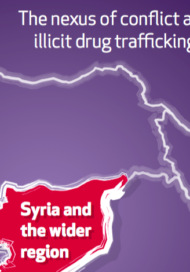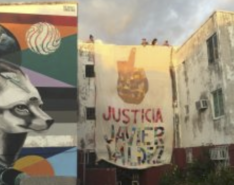Posted on 30 May 2017
by Sarah Chayes
In some five dozen countries worldwide, corruption can no longer be understood as merely the iniquitous doings of individuals. Rather, it is the operating system of sophisticated networks that cross sectoral and national boundaries in their drive to maximize returns for their members. Honduras offers a prime example of such intertwined, or “integrated,” transnational kleptocratic networks. This case thus illustrates core features of the way apparently open or chaotic economies are in reality structured worldwide—and some of the dynamics that are driving climate change, persistent inequality, and spiraling conflict.
THE HONDURAN KLEPTOCRATIC OS IN ACTION
- In this example, the three interlocking spheres are roughly co-equal in psychological impact if not in amounts of captured revenue. They retain a degree of autonomy, and are often disrupted by internal rivalry.
- This system’s operations devastate the environment—though Honduras is not a “resource” country. Most threats to biodiversity derive from deliberate “development” policies—whose primary purpose is actually to funnel rents to network members.
- Modern renewable energy, as well as hydropower, is captured by the network. The migrant crisis is also fueled by this brand of corruption.
- Repression is carefully targeted for maximum psychological effect. An example was the March 2016 assassination of environmental and social justice activist Berta Cáceres, which reverberated through like-minded communities.
- The kleptocracy benefits from significant external reinforcement, witting or unwitting, including not just military assistance, but much international development financing.
A DIFFERENT “CHIP”
- The first step to disabling the kleptocratic OS is to acknowledge it, and outsiders’role reinforcing it. Western policymakers should invest in the candid study of these networks and to corruption as an intentional operating system, and evaluate whether their inputs are, on balance, enabling or challenging these structures.
- Environmental protection is part of an awakening indigenous worldview that provides an integrated, positive vision many find worth fighting for. Community groups are establishing their own networks, in which cultural and environmental revival is linked to labor and land rights and autonomous education. But these groups receive proportionately little support from donor governments and institutions.
- Community-supported alternative development models exist. Members of such organizations—who have faced death to combat network-controlled dams—readily identify micro-dams that meet their approval. They have helped design and construct some; others contribute to local well-being. Development implementers should study such projects and apply their principles.
- Lessons from Honduras are applicable worldwide. Engaged Honduran community groups have valuable insights not just into how development assistance can produce better results in Honduras, but into ways the West might retool its economy to reduce inequality while preserving and cultivating natural resources.



